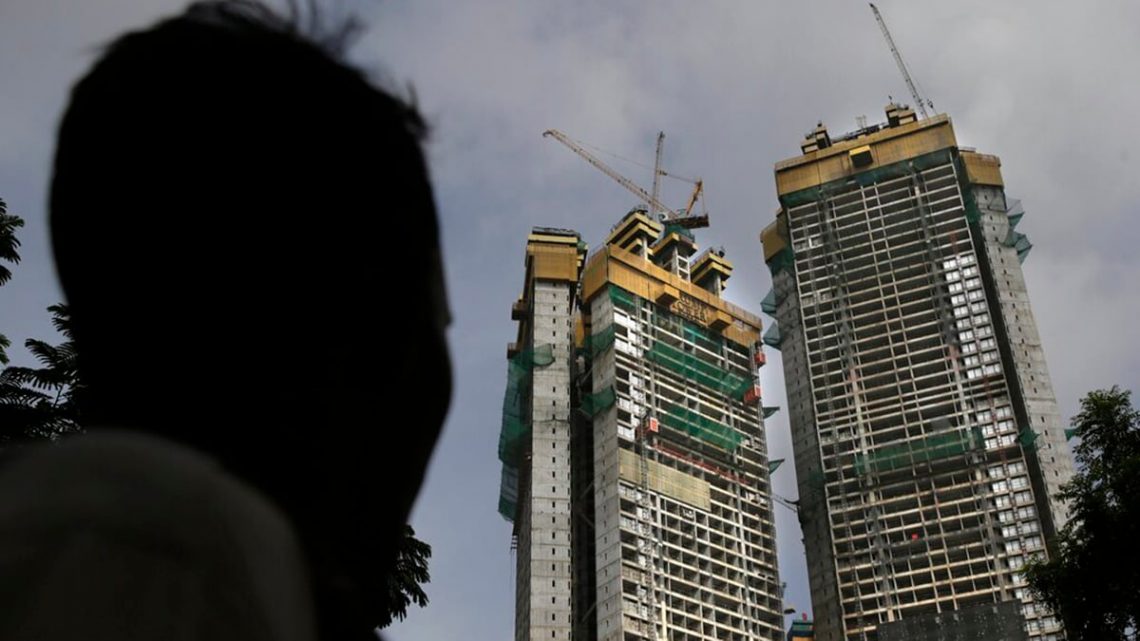The real estate sector contributes 7 per cent to India’s gross domestic product (GDP).
The country’s housing market has grown by 60 per cent since 2019, with premium housing leading the trend.
The commercial property sector is experiencing significant growth. With the rise of Global Capability Centres (GCCs), consistent hiring trends, and a renewed emphasis on returning to the office, the demand for flexible and technology-enabled office spaces is increasing rapidly.
The real estate sector’s role is set to become more crucial in the country’s economic expansion, with a projected market size of $4.8 trillion by 2047, according to a joint report by EY and Confederation of Real Estate Developers’ Associations of India (CREDAI) published in November 2024.
As Finance Minister Nirmala Sitharaman prepares to present the Union Budget for FY 2025-26 on February 1, stakeholders in India’s real estate sector are keenly watching for policy measures that could drive growth and address affordability challenges.
Here’s what is on the top of the industry’s Budget 2025 wishlist for the real estate sector:
Affordability remains a key concern for the real estate sector. The share of sales in the sub-Rs 50 lakh segment has declined from 48 per cent in 2018 to below 30 per cent in 2024, despite strong overall demand.
Industry leaders are advocating for changes to home loan tax benefits to improve affordability.
Shishir Baijal, Chairman and Managing Director of Knight Frank India, suggests raising this to Rs 5 lakh to make home loans more accessible. The current deduction for home loan interest payments under Section 24(b) of the Income Tax Act is capped at Rs 2 lakh. Many industry experts.
“At present, Section 80 C of the Income Tax Act does not provide for a focused benefit on housing which is the largest and most important expense item for most taxpayers during their lifetimes. A separate annual deduction of Rs 150,000 for principal repayment will improve housing affordability and provide the much-needed fillip to opt for home loans,” Baijal said.
Lower stamp duty and reinstating Credit Linked Subsidy Scheme (CLSS) under Pradhan Mantri Awas Yojana (PMAY) could be expected to incentivise the buyers in the affordable segment, Axis Securities said in a recent report.
The Pradhan Mantri Awas Yojana (PMAY) 2.0 provides a 4 per cent interest subsidy on loans up to INR 8 lakh, with a house value cap of Rs 35 lakh. However, real estate prices in major cities exceed this limit, preventing many from benefiting.
Industry leaders propose increasing the maximum house value limit from Rs 35 lakh to Rs 50 lakh in metropolitan areas. This adjustment would help align policy with market realities, enabling more homebuyers to take advantage of the scheme.
Under Section 54 of the Income Tax Act, long-term capital gains from selling an existing house can be reinvested in a new property. However, the exemption applies only if the new property is completed within three years of the sale. Given increasing project sizes and frequent delays, the industry is advocating for an extension to five years.
Additionally, the rule requiring a homebuyer to purchase a new property within one year before or two years after selling the old one is seen as restrictive. Stakeholders suggest extending the pre-purchase period to two years, allowing home sellers more flexibility in finding the right property.
Some industry experts are also hoping the budget will address green housing. Pranay Kumar, Executive Director of Rudrabhishek Enterprises Limited (REPL), has called for a “focus on green-certified buildings and eco-friendly construction by allocating funds for green financing schemes and energy-efficient housing. These measures will strengthen the real estate sector, ensure affordable housing access, and support India’s goal of becoming a developed nation by 2047.”
In a bid to promote rental housing, Knight Frank has suggested a 100 per cent tax exemption on rental income up to Rs 3 lakh for houses priced below Rs 50 lakh.
Many properties in this price bracket remain unoccupied as owners find renting them unviable due to low yields. This measure would encourage property owners to rent out vacant units, increasing the rental supply.
To address housing shortages, experts also propose utilising government-owned surplus land– such as that owned by the railways and defence forces– for high-density rental housing. Under this model, units would be rented at a 2 per cent yield on the rateable value, restricted to eligible homebuyers and never sold in the open market.
The Small and Medium Real Estate Investment Trusts (SM REITs) framework, introduced by SEBI in 2024, has enhanced transparency in real estate investments. Sudarshan Lodha, Co-founder of Strata Property Management, emphasised that SM REITs can help stimulate office, retail, and industrial real estate growth while making investments more accessible to retail investors.
Industry leaders hope the budget will introduce tax incentives for SM REITs to further encourage participation and liquidity in the sector. Increased flexibility in tax regulations could enhance retail investor confidence and market participation.
Link to article –
